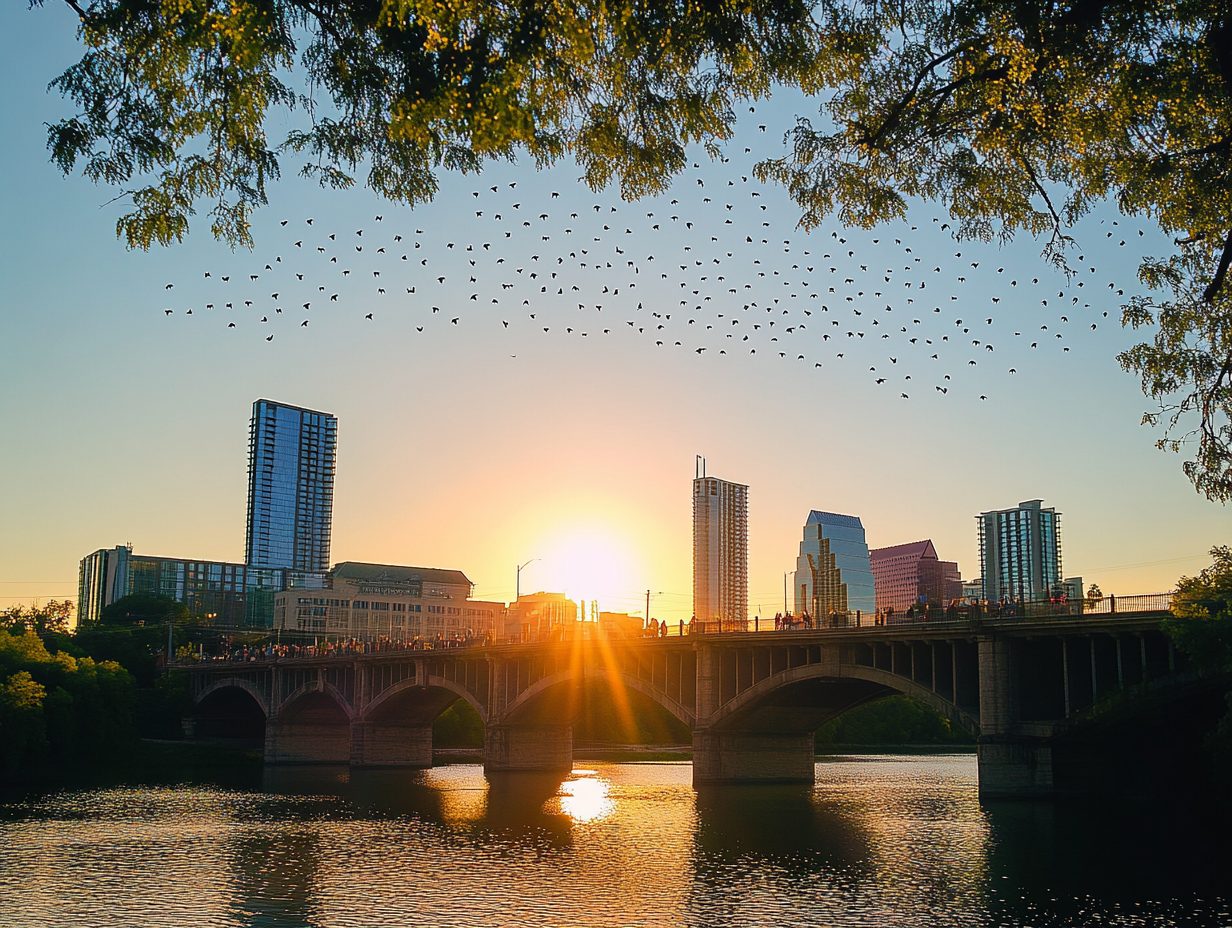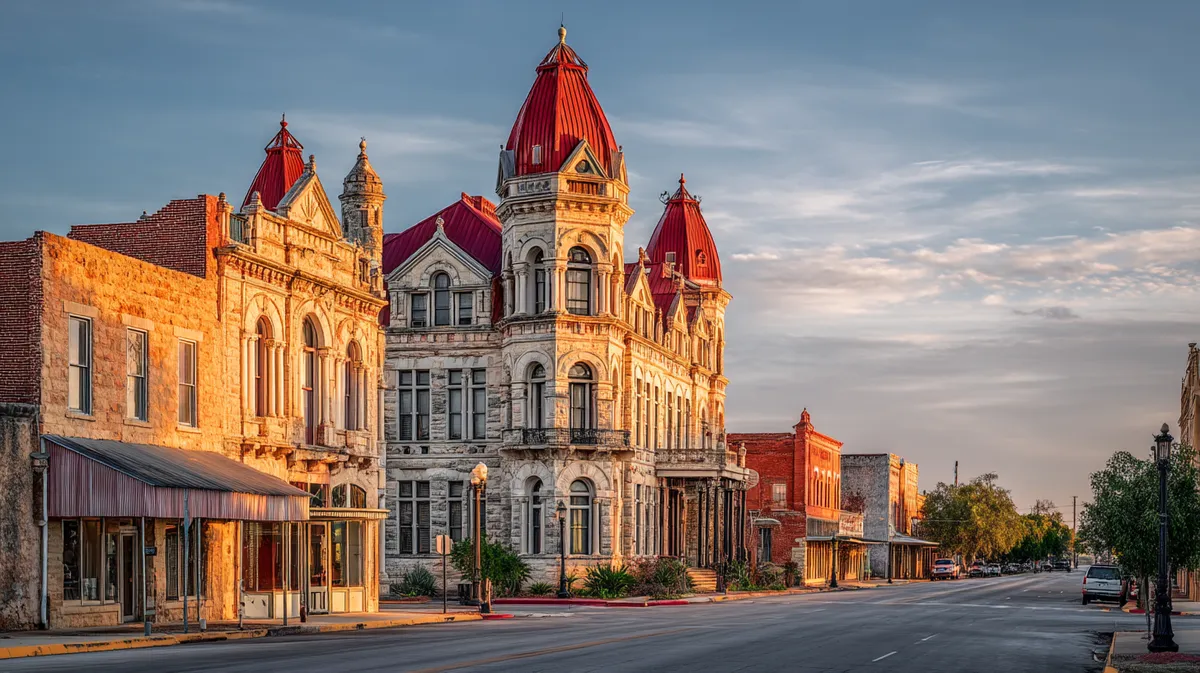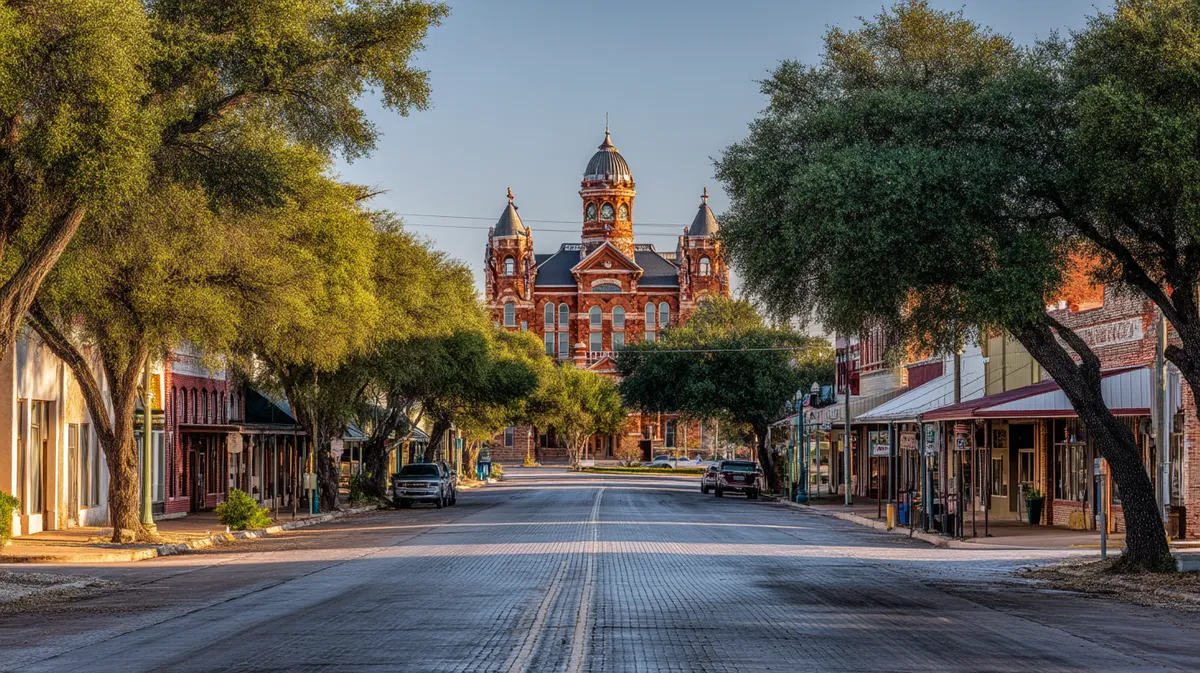Overview
Austin, TX is one of those places that’s hard to ignore—equal parts funky, fast-growing, and sometimes frustrating. In 2025, the city’s population sits just north of 1,050,000 and still climbing, though some locals are starting to scatter outward in search of cheaper digs. Housing costs have surged over the last five years, with the median home price hovering around $580,000. Despite these price hikes, new residents—particularly from California and the East Coast—continue to roll in, lured by the city’s creative energy and booming tech industry. So, if you’re wondering whether to pack up and chase that fabled Austin dream, you’re not alone. But before you slap a “Keep Austin Weird” sticker on your bumper, let’s dive into the good, the bad, and the downright sweaty of living in Texas’s capital city.
Pros of Moving to Austin
Let’s start with the sunshine, because Austin’s got it in spades. There’s something intoxicating about waking up to blue skies for the better part of the year, especially if you hail from a place where gray clouds are basically permanent. Weekends revolve around water holes—Barton Springs, Canyon Lake, the meandering Colorado River—where locals cool off, picnic, or host the occasional floating party. Outdoor junkies can hit up the Greenbelt for hiking, bouldering, or just lazing by creekside swimming holes. If nature is your jam, Austin’s got you covered.
Then there’s the people. Austinites are an eclectic bunch—tech bros rubbing elbows with artists, hippies, and taco-obsessed foodies. There’s a vibe here that’s equal parts laid-back and entrepreneurial. Folks love a good craft beer, an even better cup of third-wave coffee, and swapping stories about that new food truck that just popped up on the East Side. It’s the kind of city where your neighbor might be coding the next big app by day and playing in a punk band by night.
Speaking of bands, Austin’s live music scene is legendary for a reason. You’ve got Sixth Street’s raucous bars, Red River’s indie clubs, and hidden gems along South Congress where you can hear everything from outlaw country to garage rock. Throw in festivals like ACL (Austin City Limits) and SXSW, and you get a year-round music carnival that’s nearly impossible to resist. If you’re someone who loves discovering new artists or dancing till midnight, the city’s nightlife might be your personal playground.
Education also scores high marks here. The University of Texas at Austin anchors a vibrant college-town feel, bringing in bright minds and cutting-edge research. Beyond UT, you’ve got a cluster of tech companies—Dell, Tesla, and Apple, to name a few—turning the city into a Silicon Hills hotbed. Job opportunities abound for software engineers, data analysts, and creative professionals alike. This tech-driven economy is a major draw, translating into higher wages than many other parts of Texas.
And let’s not forget the food scene, because it’s borderline addictive. Tacos rule the roost—try breakfast tacos at a roadside stand, or hit up Torchy’s for something a bit fancier. Barbecue fiends can find melt-in-your-mouth brisket at places like Franklin Barbecue or La Barbecue (arrive early; lines are part of the deal). But Austin’s culinary repertoire goes beyond Tex-Mex and smoked meats. You’ll find Thai-inspired spots, vegan bakeries, Cajun joints, and an ever-expanding array of fusion food trucks that somehow make kimchi tacos a new obsession.
Finally, the sense of community here is strong. Despite all the transplants, there’s an openness to making new friends, whether it’s at a backyard grill session or a random meetup at Zilker Park. There’s also a streak of activism—people here care about social causes, the environment, and supporting local businesses. It’s not just “keep Austin weird,” it’s “keep Austin genuine.” And that genuineness, that unabashed pride in local art, music, and culture, is one of the biggest reasons people fall hard for this city.
So, if you’re looking for sunshine, creative energy, killer tacos, and an economy that (for now) is still humming along, Austin might just be your promised land. Just keep in mind that every oasis has its cracks—and we’ll get into those next.
Downsides of Moving to Austin
Alright, time to shine a light on the underbelly. First up: cost of living. If you’ve been anywhere near the housing market recently, you know Austin’s no longer a budget-friendly hideout. Median home prices hitting $580K in 2025 might make sense in California, but in Texas, it’s staggering. Property taxes are also notoriously high, so even if you manage to snag a good deal on a house, the monthly tax bill can feel like a punch in the gut.
And it’s not just real estate. Rents have shot up, groceries are pricier, and even that legendary brisket costs more than it did a few years back. Add in the fact that wages (outside of tech) haven’t kept pace with housing costs, and you end up with a city where artists and musicians—arguably the soul of Austin—are getting priced out of their own neighborhoods. So while the city retains its quirky, creative vibe, it’s increasingly confined to certain pockets, with gentrification weaving its way through East Austin and beyond.
Then there’s traffic. It’s a running joke around here that I-35 is perpetually under construction or backed up. Rush hour can morph into a slow-motion parade, complete with honking horns and the occasional meltdown. And don’t even think about downtown parking unless you’re prepared to pay steep garage fees or circle the block for an eternity. The city’s public transportation game leaves a lot to be desired. Sure, we’ve got buses and a single commuter rail line that connects Downtown to Leander, but compared to major metros like Chicago or New York, it’s painfully inadequate. If you don’t own a car, you’ll be relying on ride-shares or praying your bus arrives on time—which, spoiler alert, it might not.
We can’t talk about Austin without addressing the weather. Yes, the sunshine is glorious—until August hits and you feel like you’re living in a sauna. Triple-digit temperatures are normal, and the humidity can cling to your skin like a needy ex. Outdoor plans need to be scheduled strategically or you’ll risk heatstroke. And let’s not forget about the allergies. Cedar fever is real, folks. Each winter, the local juniper trees release a pollen explosion, leaving many residents hacking, sneezing, and cursing the day they moved here.
Another buzzkill is the sense that “Old Austin” is disappearing. Locals lament the closure of iconic music venues and dive bars, replaced by shiny condos and upscale boutiques. The city’s identity is in flux: Is it still that scrappy college town where the weird is celebrated? Or is it just another shiny tech hub obsessed with rooftops and craft cocktails? The truth, perhaps, is somewhere in between. But if you’re seeking a laid-back, affordable artist’s haven, you might be five or ten years too late.
Lastly, with rapid growth comes strain on infrastructure. Roads, schools, power grids—everything is feeling the pinch. Summer power outages aren’t unheard of, and water restrictions crop up most years. There’s also an ongoing debate over how to handle the homeless population, as rising rents push more people into vulnerable situations. These are complex issues with no quick fixes, and watching the city grapple with them can be frustrating.
So, while Austin’s got star power—music, tacos, tech jobs—there are some solid reasons to think twice before making the leap. High housing costs, bumper-to-bumper traffic, scorching summers, and an evolving cultural landscape all factor into whether Austin’s still the right fit for you. It’s a city of contrasts—equal parts hope and hustle, creativity and congestion. The big question is, can you handle the messiness? Because Austin is messy. And that’s part of its charm…but it’s also its curse.
Wrapping Up
Austin’s one of those places that can feel like a dream or a headache, depending on the day. The city’s pros—sunny weather, thriving jobs, killer food, and a fierce creative spirit—are undeniable. But there’s a flip side: a skyrocketing cost of living, agonizing traffic, and a culture at risk of being watered down by rapid growth. If you want to move here, come with eyes wide open—and a plan to navigate both the joys and the pitfalls. Austin still has that spark, that intangible something that makes it a hot destination. Just make sure you’re ready for the heat, both literal and metaphorical, before you call the movers.
5. FAQs
- Is Austin’s housing market expected to stay expensive?
Yes, most experts predict prices will remain high, particularly near Downtown and popular neighborhoods like South Congress and East Austin. Demand continues to outpace supply. - Do I really need a car in Austin?
While it’s possible to rely on buses and ride-shares, most Austinites find life easier with a vehicle. Public transport isn’t expansive, so a car provides more flexibility. - What’s the best time of year to move to Austin?
Spring or fall. Summers are scorching, and winter can bring Cedar fever. Mid-spring and early fall typically mean moderate weather and fewer hassles. - Are tech jobs the only game in town?
Tech is huge here, but Austin also has strong healthcare, education, and creative sectors. The job market is fairly diverse, though tech often grabs the headlines. - What’s the deal with property taxes?
Property taxes in Texas can be high because the state lacks an income tax. Always factor in the annual tax bill when buying a home—it can significantly affect affordability. - Is the Austin music scene still thriving?
Despite rising costs, the city remains a music mecca. You’ll still find vibrant venues and festivals, but expect to hunt a bit harder for smaller, underground shows. - How bad are allergies in Austin?
For many, cedar pollen can be brutal from late December through early spring. If you’re moving here, pack your allergy meds—or brace for a rough first winter.













